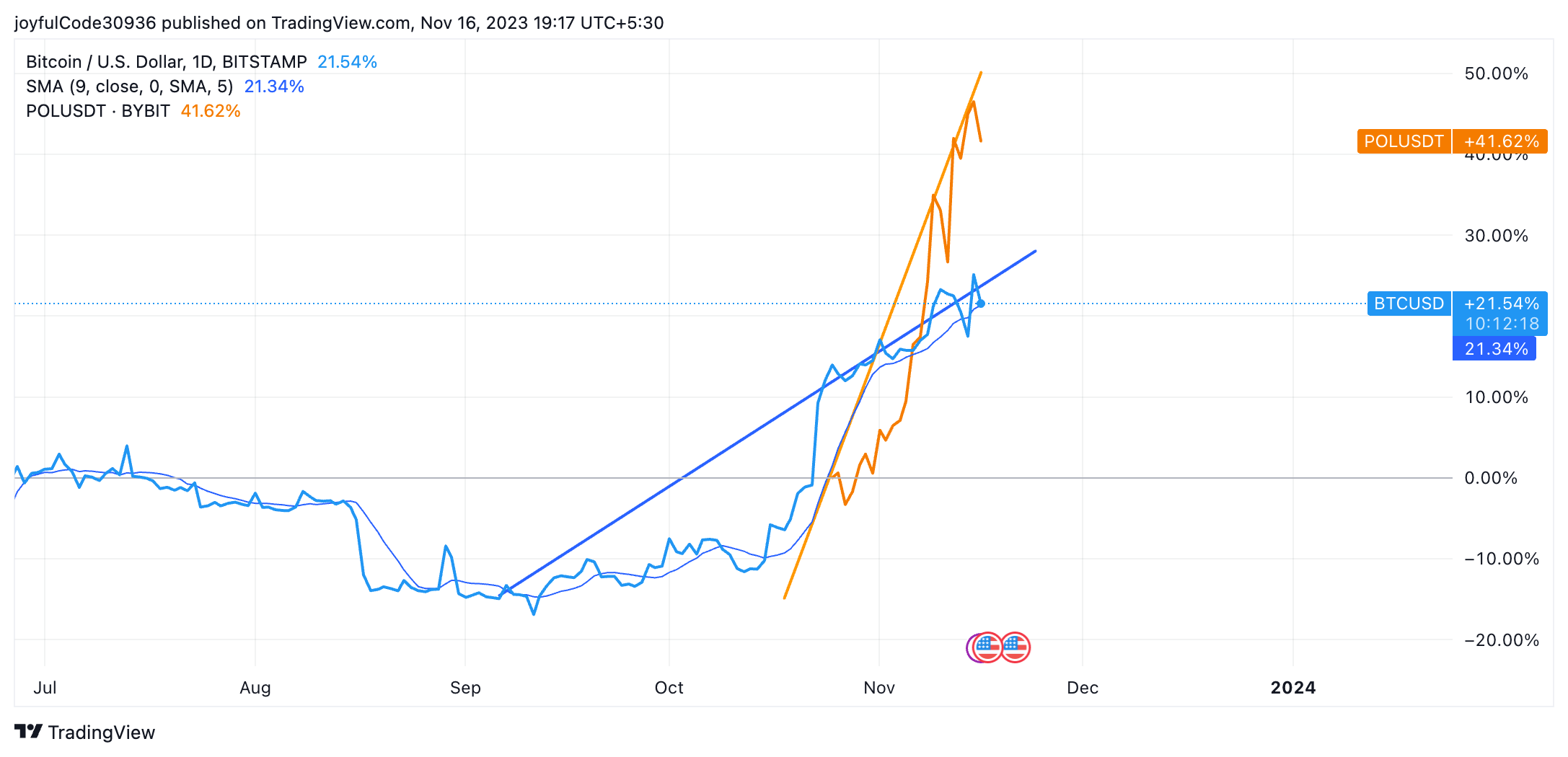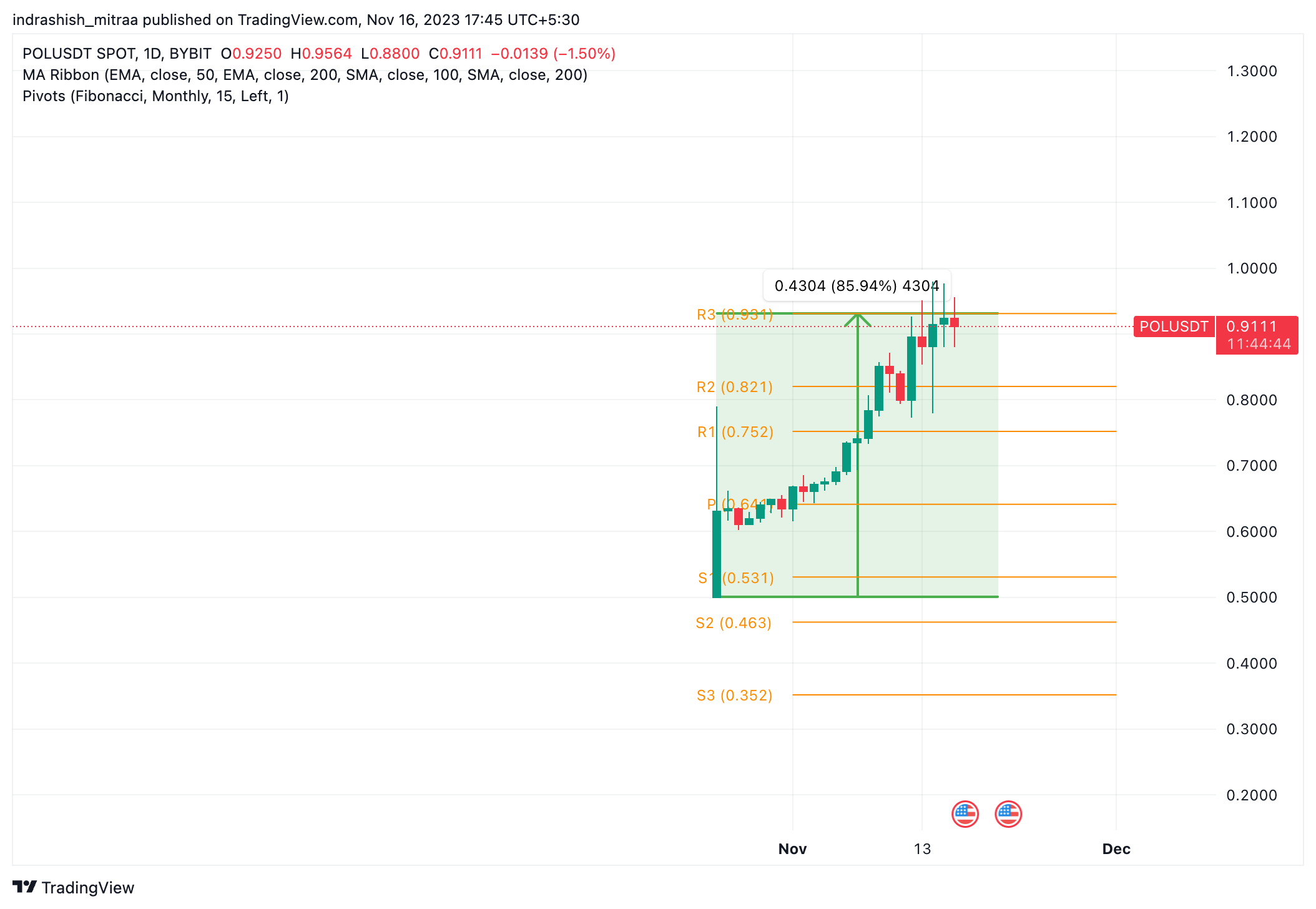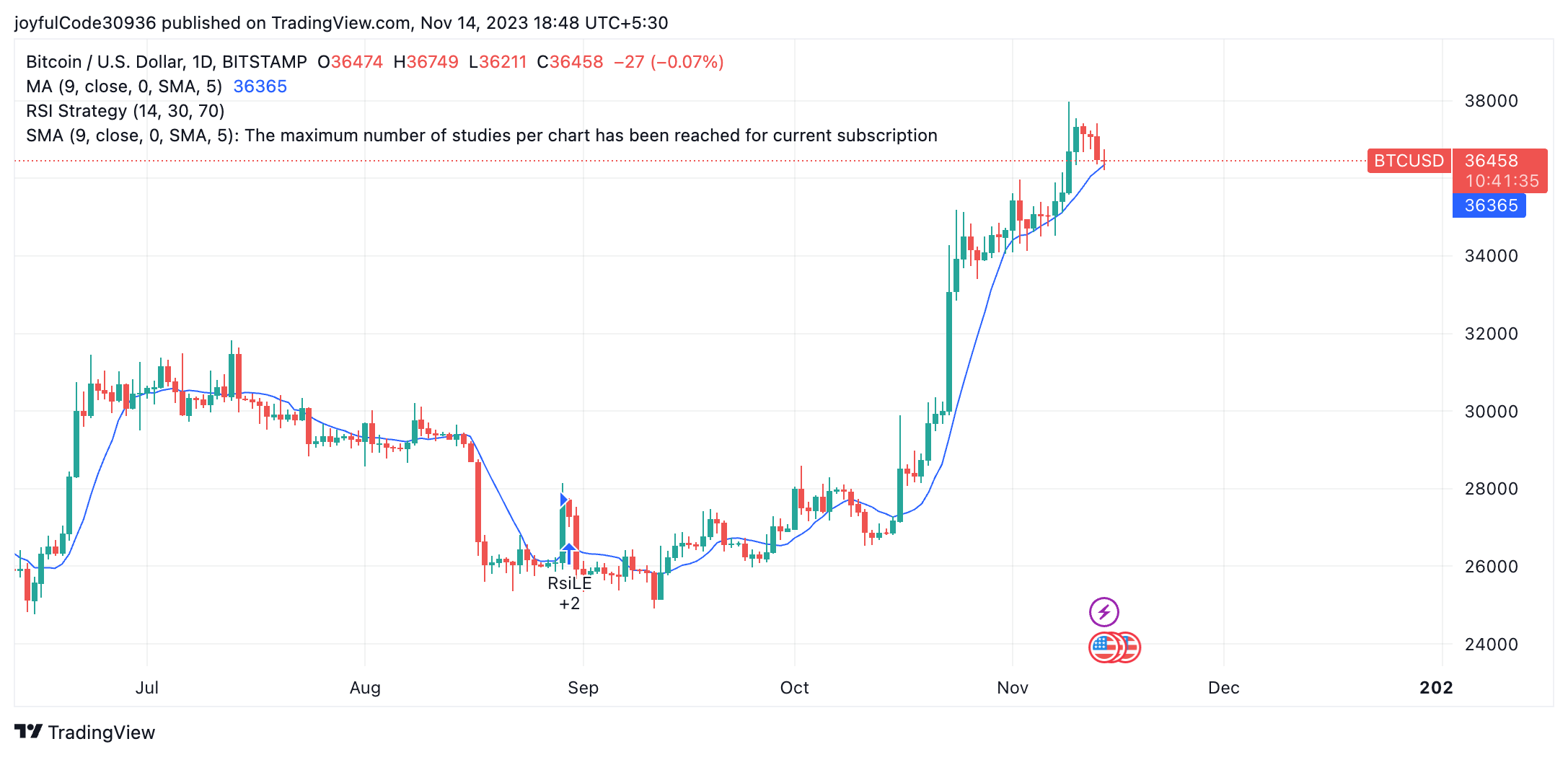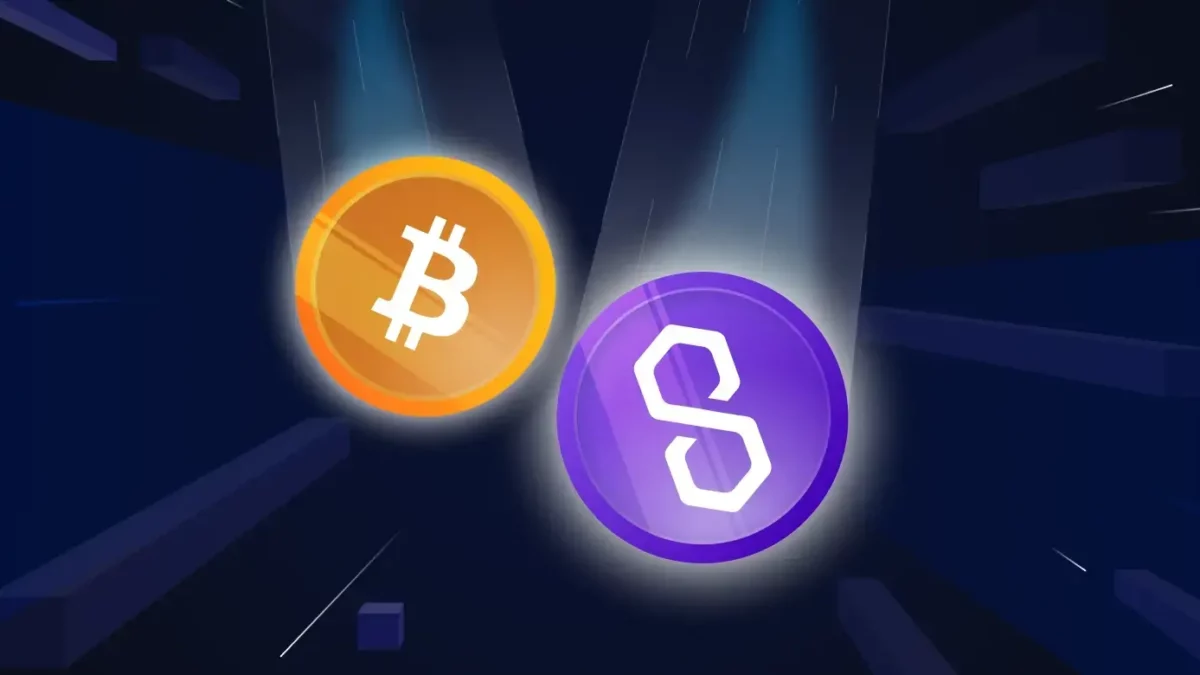Table of Contents
ToggleKey Takeaways:
- Polygon facilitates seamless blockchain project development through user-friendly frameworks and innovative Sidechains.
- As a digital pioneer, Bitcoin emphasizes decentralization, security, and scarcity, positioning itself as digital gold with capped supply and cryptographic transactions.
- Bitcoin, a rare asset with a capped supply, contrasts with Polygon’s scalability focus as ‘The Ethereum Killer.’
Ever since the crypto space was introduced, it has been an unusually captivating ride that the technology world has seen since the onset of the Internet. In its journey so far, two prominent players have gotten a solid stand within the community—Polygon (POL) and Bitcoin (BTC). Among the array of digital assets, these crypto have gathered significant attention as each boasts distinctive features and capabilities that have helped shape the landscape of decentralized finance as we know it today.
In the following paragraphs, we will embark on a journey to unravel the intricacies of Polygon and Bitcoin, delving into their fundamental aspects, exploring the latest developments, and drawing insightful comparisons to unveil the unique traits that set Bitcoin and Polygon apart in the ever-evolving world of blockchain technology.
What is Polygon?
Polygon represents a set of protocols strategically crafted to tackle Ethereum’s scalability concerns. The Polygon network effectively manages transactions on a distinct, Ethereum-compatible blockchain, mitigating the challenges faced by the primary Ethereum network.
In simpler terms, Polygon, previously recognized as the MATIC network, now POL, furnishes a user-friendly framework that empowers new and existing blockchain projects to build on Ethereum without encountering scalability issues. At the beginning of this year, the Polygon ecosystem unveiled a forthcoming modification set to be implemented through POL. The POL token (Polygon Ecosystem Token) has been carefully designed to facilitate a gradual four-year transition, aiming to supersede the current POL token and serving as a pivotal element in the evolution toward Polygon 2.0.
Through the use of Polygon, users can engage with any decentralized application (DApp) sans the apprehension of network congestion.
Unique Features of Polygon:
- Polygon 2.0 Transformation: Aligning with the specifications of Polygon 2.0, the platform is currently undergoing a significant evolution of its products. This transformation integrates zero-knowledge technology, turning Polygon into a comprehensive scaling solution for the Ethereum blockchain.
- Proof-of-Stake (PoS) to ZK Validium Layer 2: As part of the metamorphosis, the Polygon Proof-of-Stake (PoS) chain is being reconfigured into a ZK validium Layer 2 network specifically designed for the Ethereum blockchain.
- Supernet Architecture Construction: A supernet architecture is concurrently in development, acting as the foundation for a hub comprising ZK Layer 2 networks. These networks operate cohesively within an ecosystem marked by an efficient interoperability design.
- POL Token Upgrade: In tandem with these changes, the POL token is poised to undergo a transition into the enhanced POL token. This upgraded token is geared to offer significantly improved utility, reflecting the expanded ecosystem’s capabilities. Moreover, it will introduce new features, including the ability for users to engage in restaking.
5 Benefits of Polygon (POL) Token
POL introduces several key advantages for the Polygon ecosystem.
- Enhanced Ecosystem Security: The Polygon chain benefits from a highly decentralized pool of PoS (Proof-of-Stake) validators, ensuring security, resilience, and impartiality. Incentivized to join, validators actively secure multiple Polygon chains.
- Unlimited Scalability: POL facilitates the exponential growth of the Polygon ecosystem, positioning it for widespread adoption. It empowers the validator pool to scale seamlessly, supporting thousands of Polygon chains without compromising security.
- Sustained Ecosystem Support: Recognizing the early stages of the Polygon ecosystem and the broader industry, sustained support is crucial. POL has introduced an enduring, in-protocol mechanism to facilitate such activities over the years.
- Frictionless Operation: Unlike many blockchain protocols, POL is crafted to eliminate the need for users and developers to hold, stake, or consume native tokens to access the network. This design choice minimizes friction and enhances the overall user and developer experience.
- Community Governance: Aligned with the core value of decentralization, Polygon’s governance is intended to be community-driven. POL is empowered to hold governance rights, becoming an integral component of governance frameworks within the Polygon community.
Latest Polygon (POL) News:
- Unlocking the future, POL is set to become a next-generation token that can power a vast ecosystem of ZK-based L2 chains.
The POL token upgrade is now live on Ethereum mainnet.
Polygon 2.0, released this summer, is a roadmap for scaling Ethereum to build the Value Layer of the Internet. POL unlocks that future.
POL is a next-generation token that can power a vast ecosystem of ZK-based L2 chains.… pic.twitter.com/gmrsu0ZqLz
— Polygon (Labs) (@0xPolygonLabs) October 25, 2023
- The POL token has been pique-ing investors’ interests since its launch earlier in November 2023 and reaching new heights!
Polygon Ecosystem Token reached a new all-time high of $0.93816. 📈$POL #POL #PolygonEcosystemToken
— BTCATH – All-Time High Alert (@btcathbot) November 13, 2023
Bitcoin(BTC) vs Polygon(POL): Comparative Analysis
| Comparison Basis | Bitcoin (BTC) | Polygon (POL) |
| Launch date | 2009 | 2023 |
| Founders | Satoshi Nakamoto | Jaynti Kanani, Sandeep Nailwal, and Anurag Arjun |
| Blockchain protocol | Bitcoin Blockchain | Polygon Chain working for Ethereum Mainnet |
| Token type | Native | Native |
| Market Cap* |
$716,191,158,636
|
$55,377,135
|
| Circulating Supply** |
19,541,912 BTC
|
59,586,776 POL
|
| Consensus method | Proof of Work (PoW) | Proof of Stake (PoS) |
MarketCap* and Circulation Supply** as of November 2023. Data sourced from CoinMarketCap.
What is Bitcoin?
Bitcoin, the oldest among today’s array of digital crypto assets, stands as a decentralized digital asset initially outlined in a 2008 whitepaper by an individual or collective entity operating under the pseudonym Satoshi Nakamoto. The official launch of the Bitcoin crypto occurred in 2009.
Functioning as a peer-to-peer (P2P) online currency, Bitcoin enables direct transactions between two autonomous participants within the network, devoid of any third-party interference. Satoshi Nakamoto articulated the creation of Bitcoin as a means to streamline online payments between parties, bypassing the protracted and arduous procedures associated with traditional financial institutions.
Unique Features of Bitcoin
- The decentralized network of BTC contributes to an increased layer of security and resilience against centralized control.
- BTC’s limited supply of 21 million creates scarcity which makes it equally precious as scarce metals like gold. This feature is designed to mitigate inflationary pressures over time.
- Bitcoin is divisible into smaller units called satoshis. One bitcoin is equivalent to 100 million satoshis, allowing for microtransactions and increased flexibility in the use of the currency.
- The cryptographic nature of Bitcoin transactions ensures a high level of security. Once a transaction is added to the blockchain, it becomes practically immutable, making it resistant to tampering or fraud.
Read On: Polygon vs Solana
Latest Bitcoin (BTC) News:
- Ahead of the Bitcoin halving event, set to take place in 2024, the Bitcoin price is touching old levels and is anticipated to repeat its history of price recovery before the halving occurs.
$36,539.90#Bitcoin #BTC $BTC $USD
— Bitcoin (@Bitcoin) November 14, 2023
- The crypto space is gearing up with anticipation of the Spot BTC ETF approvals ahead of the halving event.
🚀 Urgent Update:
The upcoming deadline for the next #Bitcoin Spot ETF is just 4 days away!This also marks the conclusion of the potential timeframe for the approval of all 12 Spot ETFs. pic.twitter.com/eVogGecOrM
— BITCOINLFG® (@bitcoinlfgo) November 14, 2023
Bitcoin(BTC) vs Polygon (POL): Key Differences
| Feature | Bitcoin (BTC) | Polygon (POL) |
|---|---|---|
| Type of Crypto | Digital Currency | Utility Token |
| Blockchain Technology | Blockchain | Ethereum-based sidechain |
| Primary Use Case | Store of Value, Medium of Exchange | Scalable blockchain for decentralized applications |
| Consensus Mechanism | Proof of Work (PoW) | Proof of Stake (PoS) and PoS-based sidechains |
| Transaction Speed | Slower (Approximately 10 minutes per block) | Faster (Depends on the specific sidechain) |
| Scalability Solutions | Limited scalability, faces scalability challenges | Designed to provide scalability for Ethereum |
| Smart Contract Support | No native support for smart contracts | Supports smart contracts on the Ethereum Virtual Machine (EVM) |
| Supply Limit | Capped at 21 million BTC | No fixed supply limit (initial supply of 10 billion MATIC) |
| Monetary Policy | Deflationary (limited supply) | Not inherently deflationary, subject to the total supply dynamics |
| Mining/Validation | Mining through Proof of Work | Staking and validators in Proof of Stake |
| Security Approach | Relies on energy-intensive PoW for security | Leverages PoS and the security of the Ethereum network |
| Main Focus | Digital gold, store of value | Scalable blockchain infrastructure for decentralized applications |
| Community and Ecosystem | Large and well-established | A growing ecosystem with a focus on Ethereum compatibility |
| Native Token | BTC | MATIC |
It’s important to note that Bitcoin and Polygon serve different purposes within the broader crypto space. Bitcoin is primarily a digital currency and a store of value, while Polygon aims to provide a scalable and interoperable platform for decentralized applications on the Ethereum network. The choice between them would depend on the specific use case and requirements of the user or developer.
Bitcoin vs Polygon: Technical Analysis

Source: TradingView
Looking back at 2023, BTC has experienced an overall bullish year, given the much-awaited Bitcoin Halving event set to occur within the second quarter of 2024. With an overall 110% change in BTC’s value, the crypto asset is expected to breach the $36k level again and attempt to reach $40k by the end of the year if the bullish momentum stays the same.
The POL value has moved 26% since the beginning of 2023, with an 86% change in its value within the past 30 days. Looking at Polygon, the bullish sentiments that the token is gathering post its launch of the new token POL, which is set to phase out the previously traded MATIC, seems to aim to reach the $0.98 to $1 mark by the end of November.
Additional Read: Bitcoin vs Ethereum
Polygon Price Prediction 2023

Source: TradingView
Polygon (POL) price has seen a staggering 1.03% surge in the last 24 hours at the time of writing. This breakout of POL comes after a descending trend that the Polygon ecosystem has going on since the beginning of 2023, apart from a few rebounds. As Polygon’s price broke through the crucial level of $0.5 after the launch of POL mainnet, the price is trying to break through the $1 mark, anticipated by the end of this month.
If the bulls continue to stride toward the upward trajectory, POL may continue its $1 journey for the whole of December and end the year above $1.2 if it is successful in recovering the $1.15 resistance.
Note: The price prediction has been done basis the MATIC token, but it stays true for POL as the new token is set to phase out the MATIC tokens in the coming years.
Learn More: Polygon Price Prediction
Bitcoin Price Prediction 2023

Source: TradingView
As the Bitcoin halving event is nearing the crypto space, market history is almost on the verge of a re-run. BTC price has been soaring high and reaching milestones since the beginning of November 2023. Currently running at a value of $36k, the BTC price is expected to reach the $50k mark as the Bitcoin halving event nears.
Other than the halving event, the anticipation for the approval of the Spot Bitcoin ETF has also helped in propelling the asset’s price. However, at the time of writing, the BTC price is looking at a bearish move, as shown by the red candles, only to reach beyond the $36k level by mid-December and trend on a bull run to end the year just above $40k.
Read More: Bitcoin Price Prediction
Should you buy POL or BTC?
Both Bitcoin and Polygon stand on their own fundamentals, which sets them apart from the rest of the crypto assets. While BTC is the oldest crypto asset, Polygon has invested itself by making an attempt to bridge the gaps presented by crypto assets like BTC and ETH.
Being capped at 21 million, Bitcoin supply makes it a rare crypto asset in a portfolio, whereas the transaction speed of Polygon and the ecosystem it is creating for all of the crypto space has already garnered it the name of ‘The Ethereum Killer’. Being running on the energy-efficient Proof of Stake consensus mechanism, POL has the upper hand in launching more conscious projects, whereas Bitcoin has the new forked Bitcoin Spark token and the BTC ETFs to look forward to, along with Bitcoin Ordinals to push its use cases apart from being a digital currency.
While Bitcoin is looking at spreading out via various projects, Polygon is joining hands with various projects to cater to a wider range of investors and traders. Its zkEVM has been a game-changer for the blockchain, while BTC is still waiting for the UK to approve its Spot ETFs.
BTC and POL, both crypto assets, have their own set of features that make them important for the crypto ecosystem. However, which token suits your portfolio requirements should be determined after thorough research on the projects that lay ahead in the roadmap for them.
How to Invest in Bitcoin and Polygon?
Investing in crypto is super simple, safe, and secure with the CoinDCX app. It doesn’t matter whether you want to buy Bitcoin or wish to trade Polygon price today; we have got you covered.
Here are the 4 simple steps to buy your first BTC or POL with CoinDCX.
- Sign up on CoinDCX
- Complete your KYC
- Link your bank details and transfer funds
- Buy Bitcoin (BTC) or Buy Polygon (POL)
Related posts
Understanding the Different Types of Cryptos: Coins, Tokens, Altcoins & More Explained
Explore the major types of crypto assets and their unique roles.
Read more
PAWS Telegram Game: The New Tap to Earn Game That Is Beating Hamster Kombat
Discover how to play and earn with PAWS Telegram game.
Read more


